

LEARN SOMETHING NEW. Buzzword Bling: Putting Substance Behind Our Big Words. This guest post has been contributed by Typhani Harris, Ph.D.
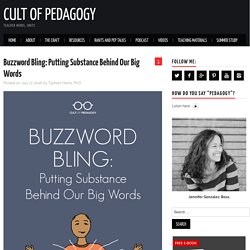
Bling refers to the imaginary sound a diamond makes when it is hit perfectly by the light, and today we bling everything: We bling our wrists, we bling our phones, I’ve even heard of Bling water. Go figure. 3 TV Shows Every Teacher Should Watch. Posted 05/16/2016 5:06PM | Last Commented 07/10/2016 12:54PM The boob tube.
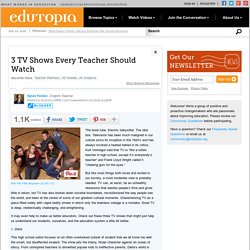
Electric babysitter. The idiot box. Summer Reading Recommendations: a Dive Into Young Adult Fiction. If you're looking for some good summer reads, consider diving into the world of young adult fiction.
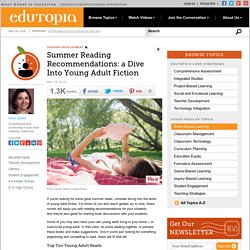
For those of you who teach grades six to nine, these novels will equip you with reading recommendations for your students, and they're also great for starting book discussions with your students. Some of you may also have your own young adult living in your home -- or soon-to-be young adult. In that case, do some reading together, or preview these books and make suggestions. And if you're just looking for something engrossing and compelling to read, these will fit that bill. Top Ten Young Adult Reads My recommendations include classics that you might have missed, as well as a few others on my top ten: How should educators act on social media? New discussions focus on how school leaders conduct themselves on social media A Georgia Education Department leader was fired recently for implying on Facebook that students in his state can’t perform as well as their peers in Finland because of their skin color.
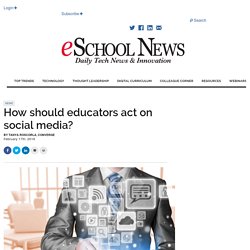
Incidents like this across the country have sparked a conversation about how education leaders should conduct themselves on social media. “Social media has just brought to the forefront what people were able to keep secret in their homes until now,” said Todd Nesloney, principal at Webb Elementary in Navasota, Texas. Digital Promise Research Map. Posted on April 26, 2016 by Rhondda We have recently had parent teacher conferences, some professional learning activities and staff appraisals, for a number of our teachers, occur at this time each year.
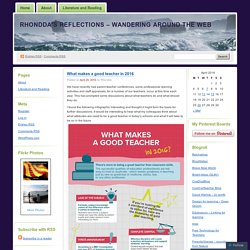
Equity is Fostered Through What We Teach and What We Don't. There are many ways that educators can interrupt inequities and build equitable schools.
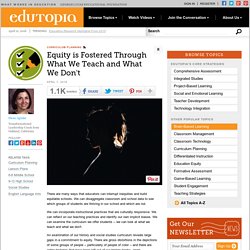
Digital Citizenship: Resource Roundup. 11 must-see TED Talks. Will. We’re Trying To Do “The Wrong Thing Right” in Schools. We’re Trying To Do “The Wrong Thing Right” in Schools Whenever I think about the way most schools are structured today, I always come back to the same question: Do we do the things we do because they’re better for kids or because they are easier for us?
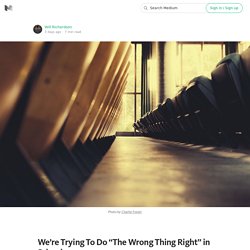
For instance: separating kids by age in school. Is that something we do because kids learn better that way? Or do we do it because it’s just an easier way organizing our work? I think all of us know the answer to that. Do kids learn better when we separate out the content into different subjects, or is it just easier for us? To be sure, these are not new questions, nor are they unique to my thinking. So why bring it up yet again? Developing a Growth Mindset in Teachers and Staff. The New Psychology of Success (2000), Dweck developed a continuum upon which people can be placed, based upon their understandings about where ability comes from. For some people (at one end of said continuum), success (and failure) is based on innate ability (or the lack of it).
Deck describes this as a fixed theory of intelligence, and argues that this gives rise to a ‘fixed mindset’. At the other end of the continuum are those people who believe success is based on a growth mindset. These individuals argue that success is based on learning, persistence and hard work. According to Dweck: The Profile of a Modern Teacher. Try different learning theories and models. Visible Learning. 150 Teaching Methods. Lecture by teacher (and what else can you do!)
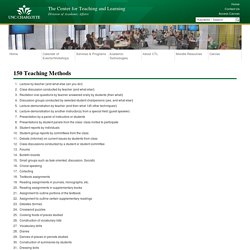
Class discussion conducted by teacher (and what else!) Recitation oral questions by teacher answered orally by students (then what!) Discussion groups conducted by selected student chairpersons (yes, and what else!) AC Digital Resources. Assessment and Rubrics. Learn more about our Online Courses, Online Certificate Programs, and Graduate Degree A collection of rubrics for assessing portfolios, group work/cooperative learning, concept map, research process/ report, PowerPoint, oral presentation, web page, blog, wiki, and other social media projects.
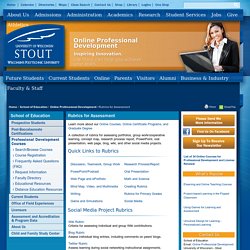
Quick Links to Rubrics Social Media Project Rubrics Wiki RubricCriteria for assessing individual and group Wiki contributions. Blog RubricAssess individual blog entries, including comments on peers' blogs. Twitter RubricAssess learning during social networking instructional assignments. 5 Do's and Don'ts for Expanding Your PLN as a Teacher. A professional learning network involves making connections and building personal relationships with other educators around the world for the purposes of sharing ideas, resources, and voicing educational concerns.
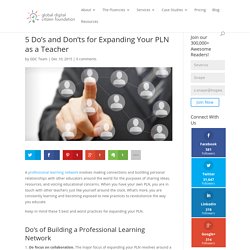
When you have your own PLN, you are in touch with other teachers just like yourself around the clock. What’s more, you are constantly learning and becoming exposed to new practices to revolutionize the way you educate. Keep in mind these 5 best and worst practices for expanding your PLN. Do’s of Building a Professional Learning Network. Social Media Explained (As A City) How Students Benefit From Social Media. Why Twitter is a Teacher's Best Friend. As a beginning teacher, there were times in the classroom when I was so steeped in day-to-day routines that I isolated myself from the rest of the world.
The daily grind kept me just at the surface, wondering if I was ever going to get it under control. I was stuck. Not moving forward. I wish I had Twitter back then. Nowadays, teachers are discovering the amazing benefits of using Twitter. There are 2 categories of reasons why Twitter can be a teacher’s best friend: personal reasons and teaching reasons. Personal Reasons. Being Mindful of Cultural Differences. Rusul Alrubail , Writer/Edutopia Community Facilitator/Chief Education Officer at The Writing Project Posted 01/13/2016 7:01PM | Last Commented 05/31/2016 5:02AM When teaching a diverse group of students, whether they are English language learners or English speakers but have a different cultural background, it’s important to be mindful of the cultural differences in students’ behaviour.
Recognizing and being able to distinguish these cultural differences allows the teacher to form a safe environment for all students. It’s important to recognize and understand these differences to be able to implement culturally responsive teaching and pedagogical practices in the classroom to ensure the success of every student. Teaching Practice. Matching Edtech Products With Neurological Learning Goals. The word edtech refers to educational technology that includes online learning activities through games, websites, computer-assisted instruction, and other virtual resources. If you're looking for edtech to meet specific goals or carefully evaluating products for use at your school, here are some suggestions to guide your decisions. This post can help you make a list of what you want from edtech digital tools that will best suit your goals and that are most consistent with neuroscience research correlations about how the brain most successfully processes information.
What might some of these goals look like? Closing the gaps in students' foundational knowledge Skill practice to build automaticity in facts and procedures Enrichment beyond mastery Applying learning to projects, inquiries, strategic planning, and other transfer opportunities Strengthening neural networks of executive functions Qualities to Seek in Edtech Products and Programs. Ten Teaching Trends from the Innovating Pedagogy Report - TeachOnline. Edudemic - Education Technology Tips For Students And Teachers. eLearning by the #Enoobs. A Great List of Web Tools That Don't Require Registration. Brain Waves Instruction. Learning in Depth. “Learning in Depth” is a simple though radical innovation in curriculum and instruction designed to ensure that all students become experts about something during their school years.
Each child is given a particular topic to learn about through her or his whole school career, in addition to the usual curriculum, and builds a personal portfolio on the topic. To the surprise of many, children usually take to the program with great enthusiasm, and within a few months LiD begins to transform their experience as learners. The program usually takes about an hour a week, with the students working outside school time increasingly. Learning in Depth (LiD) is an unusual program and tends, after the first simple description, to elicit enthusiasm from some people and hesitation from others. While the basic idea is quite simple, we think the potential implications of the program for students, teachers, and schools are profound. Hattie’s analysis of inquiry-based teaching. In his influential book Visible Learning, John Hattie presents his synthesis of over 800 meta-analysis papers of impacts upon student achievement.